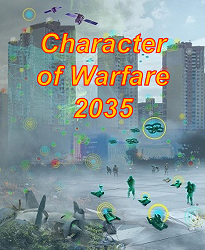[Editor’s Note: Today’s post provides fifteen insights about trends and technologies impacting the Future Operational Environment and the way the U.S. Army will compete and fight in 2035 and beyond. Gleaned from the “Character of Warfare 2035” virtual seminar, facilitated last month by the Army Futures Command’s Future Warfare Division, these insights are in no way comprehensive or definitive; rather, they provide an initial, “snap assessment” of what Mad Scientist observed about the changing character of warfare — Enjoy!]
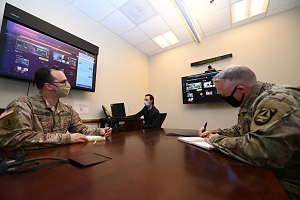
On 16-20 November 2020, Army Futures Command‘s Future Warfare Division hosted a “Character of Warfare 2035” virtual seminar that brought together military leaders and thinkers, academics, and practitioners to explore the changing character of warfare. This was the first in a series of events to examine how emerging trends and technologies could fundamentally change how the Army fights in the next 15-30 years, as part of a larger Joint and Multinational force.
The Seminar’s stated problem was:
“How does the Army frame the employment of AI, autonomy, robotics, and other emerging technologies to conceive transformational approaches to future warfare?”
Study Objectives included:
-
-
- What are the trends that will likely affect the security environment in 2035 (technology, demographics, geography, resource shortages, climate, etc.)?
-
-
-
- What are the potential threat problems that peer adversaries will pose in 2035?
-
-
-
- What are the potential technical advancements that may change the character of warfare in 2035?
-
-
-
- How could potential technical advancements change the character of warfare in 2035?
-
The U.S. Army’s Mad Scientist Initiative co-sponsored the event and facilitated a panel on the Information Environment. After observing and participating for five days in multiple panels, the following insights represent implications for the Future Operational Environment:
-
-
- Deterrence is a moving perception of redlines and not a static place. Operations in competition (see Multi-Doman Operations [MDO]) will be critical for the U.S. Army as this will likely be the most persistent state. The lines between competition and conflict continue to blur, making non-kinetic actions even more important.

- Deterrence is a moving perception of redlines and not a static place. Operations in competition (see Multi-Doman Operations [MDO]) will be critical for the U.S. Army as this will likely be the most persistent state. The lines between competition and conflict continue to blur, making non-kinetic actions even more important.
-
-
-
- The hiders vs. finders competition in the future takes on new characteristics and importance. In the future, it will be increasingly difficult to attribute
 hostile activities to nation-state actors. The use of Denial and Deception Operations will obscure intent and increase uncertainty and risk perceptions.
hostile activities to nation-state actors. The use of Denial and Deception Operations will obscure intent and increase uncertainty and risk perceptions.
- The hiders vs. finders competition in the future takes on new characteristics and importance. In the future, it will be increasingly difficult to attribute
-
-
-
- Artificial intelligence (AI), autonomy, and robotics will have an enormous and disruptive impact on the character of war. Examples include Unmanned Autonomous Systems (UAS) using AI with swarming tactics, and the proliferation of UAS throughout the world, especially given Chinese investment and distribution. The proliferation of unmanned and autonomous systems will enable countries lacking comparable military equipment and technology to level the playing field
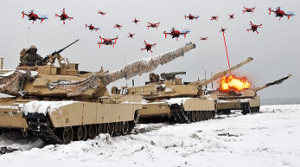 somewhat. Swarming represents an effective means to impact opponents without placing human forces in harm’s way. Less advanced and smaller states will not have to face a top-tier enemy one on one. AI, autonomous systems, and robotics will be developed in a decentralized manner for specific local problems first (even by Private Military and Security Companies [PMSCs] or other non-state actors). While the data and algorithms that solve the local problem may not scale to or approach inter-state or global levels, there will be many that try (especially if proven effective against U.S. forces). Adversaries will be proactive rather than reactionary to the introduction of AI and Robotics; especially with their employment.
somewhat. Swarming represents an effective means to impact opponents without placing human forces in harm’s way. Less advanced and smaller states will not have to face a top-tier enemy one on one. AI, autonomous systems, and robotics will be developed in a decentralized manner for specific local problems first (even by Private Military and Security Companies [PMSCs] or other non-state actors). While the data and algorithms that solve the local problem may not scale to or approach inter-state or global levels, there will be many that try (especially if proven effective against U.S. forces). Adversaries will be proactive rather than reactionary to the introduction of AI and Robotics; especially with their employment.
- Artificial intelligence (AI), autonomy, and robotics will have an enormous and disruptive impact on the character of war. Examples include Unmanned Autonomous Systems (UAS) using AI with swarming tactics, and the proliferation of UAS throughout the world, especially given Chinese investment and distribution. The proliferation of unmanned and autonomous systems will enable countries lacking comparable military equipment and technology to level the playing field
-
-
-
- Decision cycles and traditional warfare “processes” will be truncated and even re-shaped by AI
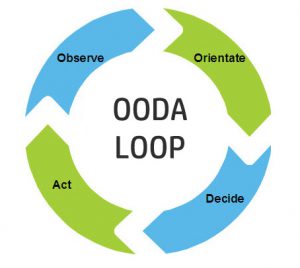 and Machine Learning (ML) battlefield applications. Threat forces will rely more on AI for decision making, accepting the risk of collateral damage (to both infrastructure and human lives) in order to achieve faster battlefield effects.
and Machine Learning (ML) battlefield applications. Threat forces will rely more on AI for decision making, accepting the risk of collateral damage (to both infrastructure and human lives) in order to achieve faster battlefield effects.
- Decision cycles and traditional warfare “processes” will be truncated and even re-shaped by AI
-
-
-
- A major component of future warfare could be between algorithms. AI is employed to identify and create asymmetric battlefields (relative to an enemy). Adversaries and the US will develop a variety of AI and robotics to: 1) achieve positional advantage through attack (sabotage) and deception in order to “paralyze” the enemy (often targeting critical infrastructure); 2) overwhelm the enemy with swarm operations; and 3) execute psychological warfare at the strategic level, focusing on five types of information actions (information deterrence, blockades, deception, disruption, and
 attacks). Adversaries will attempt to corrupt AI/ML databases used for ML training, situational awareness, and command and control – i.e., poison the data – via cyber-attacks and manipulations. They will exploit back doors built into technology, cyber-attack, and exploit via Information Operations (both factual and deceptive) implicating U.S. autonomous systems in disrupting or damaging infrastructure and injuring or killing people.
attacks). Adversaries will attempt to corrupt AI/ML databases used for ML training, situational awareness, and command and control – i.e., poison the data – via cyber-attacks and manipulations. They will exploit back doors built into technology, cyber-attack, and exploit via Information Operations (both factual and deceptive) implicating U.S. autonomous systems in disrupting or damaging infrastructure and injuring or killing people.
- A major component of future warfare could be between algorithms. AI is employed to identify and create asymmetric battlefields (relative to an enemy). Adversaries and the US will develop a variety of AI and robotics to: 1) achieve positional advantage through attack (sabotage) and deception in order to “paralyze” the enemy (often targeting critical infrastructure); 2) overwhelm the enemy with swarm operations; and 3) execute psychological warfare at the strategic level, focusing on five types of information actions (information deterrence, blockades, deception, disruption, and
-
-
-
- Ethical asymmetries between the United States and its adversaries will manifest as battlefield disadvantages. These asymmetries enable
 adversaries like China to potentially field lethal AI faster than BLUE. RED may not be constrained by the laws of warfare and global norms, including a reduced focus on collateral damage. When programmed correctly, AI ensures that orders are executed — a plus for authoritarian regimes. Adversary ethics (in all fields of competition and conflict) are different than those of the United States.
adversaries like China to potentially field lethal AI faster than BLUE. RED may not be constrained by the laws of warfare and global norms, including a reduced focus on collateral damage. When programmed correctly, AI ensures that orders are executed — a plus for authoritarian regimes. Adversary ethics (in all fields of competition and conflict) are different than those of the United States.
- Ethical asymmetries between the United States and its adversaries will manifest as battlefield disadvantages. These asymmetries enable
-
-
-
- The congested and contested Electro-Magnetic Spectrum (EMS) transcends all physical domains and is a critical component to dominating the range of military operations on land and in air, space, and cyberspace at the tactical, operational, and strategic levels.
 Further, we can expect exponential utilization of the EMS by 2035 and beyond. Data and the means for transmitting it (i.e., the EMS) will become a resource, like energy, and will impact economic prosperity and be fundamental to continuing growth. States and industries will require its uninterrupted availability and control, making it a lucrative target during competition and conflict.
Further, we can expect exponential utilization of the EMS by 2035 and beyond. Data and the means for transmitting it (i.e., the EMS) will become a resource, like energy, and will impact economic prosperity and be fundamental to continuing growth. States and industries will require its uninterrupted availability and control, making it a lucrative target during competition and conflict.
- The congested and contested Electro-Magnetic Spectrum (EMS) transcends all physical domains and is a critical component to dominating the range of military operations on land and in air, space, and cyberspace at the tactical, operational, and strategic levels.
-
-
-
- Sub-Saharan Africa and Indo-Pacific Asia will continue to be the most likely origins for novel viral epidemics. The first 20 years of this millennium has already seen six pandemics, more than in the previous 100 years. Two of these (Dengue, 1970-present, and HIV, 1981-present) began in the 20th century, but four of them (Chikungunya, 2004-2014, Zika, 2007-2016, H1N1,

Russian medical aid bound for Italy being loaded onto transport aircraft during the COVID-19 Global Pandemic. / Source: Russian Defence Ministry/Reuters via The Globe and Mail 2009, and COVID-19, 2020-2021) emerged in this century. Medical diplomacy will play a greater role in near-peer competition. Adversaries will likely couple this with information warfare efforts to expand their influence and diminish confidence in U.S. capabilities.
- Sub-Saharan Africa and Indo-Pacific Asia will continue to be the most likely origins for novel viral epidemics. The first 20 years of this millennium has already seen six pandemics, more than in the previous 100 years. Two of these (Dengue, 1970-present, and HIV, 1981-present) began in the 20th century, but four of them (Chikungunya, 2004-2014, Zika, 2007-2016, H1N1,
-
-
-
-
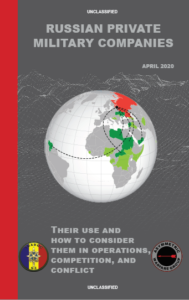
Russian Private Military Companies / Source: FMSO via AWG and Johns Hopkins APL Peer adversaries will expand the use of Private Military and Security Companies (PMSCs). The US will engage with PMSCs both kinetically and non-kinetically. New rules of engagement will need to be established, as the threat seeks to exploit seams. The use of PMSCs lowers the threshold of violence, but increases risk to U.S. military interventions. We should expect to see PMSCs with expanded capabilities, to include information warfare. PMSCs may drive military technological innovations that challenge/confound the U.S. Army as they respond to local problems in both governed and ungoverned spaces.
-
-
-
-
- The U.S. can make it more painful for an adversary when they conduct Information Operations (IO). To target an adversary, the U.S. might use offensive IO and target the adversary’s
 population. This can be done effectively by identifying fissures within the target audience that can be exploited, which might be a challenge given a state-controlled media environment. Using our adversaries’ ex-patriot populations as an attack vector might serve as a means to penetrate the home population (albeit perhaps to lesser direct effect). This will require a whole-of-government approach.
population. This can be done effectively by identifying fissures within the target audience that can be exploited, which might be a challenge given a state-controlled media environment. Using our adversaries’ ex-patriot populations as an attack vector might serve as a means to penetrate the home population (albeit perhaps to lesser direct effect). This will require a whole-of-government approach.
- The U.S. can make it more painful for an adversary when they conduct Information Operations (IO). To target an adversary, the U.S. might use offensive IO and target the adversary’s
-
-
-
- Electromagnetic Pulse (EMP) devices – both explosive and non-explosive – will become a part of an adversaries’ overall protection strategy. These devices can and will achieve outsized results in future technology-based warfare, but without the negative
 stigma of nuclear effects. Small devices and networked systems are particularly vulnerable. EMP devices are the ideal countermeasure to AI, autonomous, and robotic systems.
stigma of nuclear effects. Small devices and networked systems are particularly vulnerable. EMP devices are the ideal countermeasure to AI, autonomous, and robotic systems.
- Electromagnetic Pulse (EMP) devices – both explosive and non-explosive – will become a part of an adversaries’ overall protection strategy. These devices can and will achieve outsized results in future technology-based warfare, but without the negative
-
-
-
- The capabilities conceived and developed now, and in the near term, will define future warfare. The combat experience the U.S. Army has gained over
 the past 20 years may not be relevant in future warfare, at least in terms of near-peer conflict. The US and PRC’s perceptions of modernization will each affect their respective deterrence calculus.
the past 20 years may not be relevant in future warfare, at least in terms of near-peer conflict. The US and PRC’s perceptions of modernization will each affect their respective deterrence calculus.
- The capabilities conceived and developed now, and in the near term, will define future warfare. The combat experience the U.S. Army has gained over
-
-
-
- Stealth and surprise will be challenging to achieve and fleeting at best. With the number of sensors deployed globally and in low earth orbit, stealthy movement will not
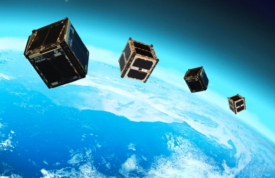 be achievable, making larger military formations easily targetable. C2 resilience needs to be built in, as it will continually be under attack and periodically disrupted.
be achievable, making larger military formations easily targetable. C2 resilience needs to be built in, as it will continually be under attack and periodically disrupted.
- Stealth and surprise will be challenging to achieve and fleeting at best. With the number of sensors deployed globally and in low earth orbit, stealthy movement will not
-
-
-
- Chaos and ambiguity are favored in subversive adversary actions. It would not actually be favorable for Russia to annex Eastern Ukraine, as they can influence Kyiv more as the

Little Green Men at Simferopol Airport in Ukraine’s Crimea peninsula, 2014 / Source: VOA, Photo by Elizabeth Arrott central Ukrainian government has to deal with continuous insurrection and chaos. China is likely to achieve its strategic goals more effectively through non-kinetic influence in Hong Kong and Taiwan, making redlines and boundaries harder to determine through a U.S. lens.
- Chaos and ambiguity are favored in subversive adversary actions. It would not actually be favorable for Russia to annex Eastern Ukraine, as they can influence Kyiv more as the
-
-
-
- Information warfare is not irregular, it is the norm. While kinetic fights are less frequent, information “conflict” occurs on a daily, if not hourly basis. An adversary will always lead with information operations. The Return-on-Investment (ROI) for competition space actions is low-cost with very high reward.
 Adversaries aim to destroy trust and confidence so that conflict risk calculations become too difficult to understand or accept. Threat actors will prefer to operate within BLUE networks – commercial, public, governmental, diplomatic, and military. Technology must be used as a method to fight disinformation campaigns – especially against disruptive methods like advanced troll armies (digital mass) and deepfakes.
Adversaries aim to destroy trust and confidence so that conflict risk calculations become too difficult to understand or accept. Threat actors will prefer to operate within BLUE networks – commercial, public, governmental, diplomatic, and military. Technology must be used as a method to fight disinformation campaigns – especially against disruptive methods like advanced troll armies (digital mass) and deepfakes.
- Information warfare is not irregular, it is the norm. While kinetic fights are less frequent, information “conflict” occurs on a daily, if not hourly basis. An adversary will always lead with information operations. The Return-on-Investment (ROI) for competition space actions is low-cost with very high reward.
-
The Future Warfare Division will continue this series of events addressing the Character of War in 2035 into the coming year as we explore the Future Operational Environment and include expertise from across Government, academia, and industry.
If you enjoyed this post, explore the U.S. Army’s single consistent Operational Environment narrative, spanning the near, mid-, and far terms out to 2050 in the following content:
Four Models of the Post-COVID World, The Operational Environment: Now through 2028, and The 2 + 3 Threat video
The Future Operational Environment: The Four Worlds of 2035-2050, the complete AFC Pamphlet 525-2, Future Operational Environment: Forging the Future in an Uncertain World 2035-2050, and associated video
… and check out the following related posts:
Competition in 2035: Anticipating Chinese Exploitation of Operational Environments
“Tenth Man” – Challenging our Assumptions about the Operational Environment and Warfare (Part 1) and (Part 2)
Blurring Lines Between Competition and Conflict
Disclaimer: The views expressed in this post do not necessarily reflect those of the Department of Defense, Department of the Army, Army Futures Command (AFC), or Training and Doctrine Command (TRADOC).

